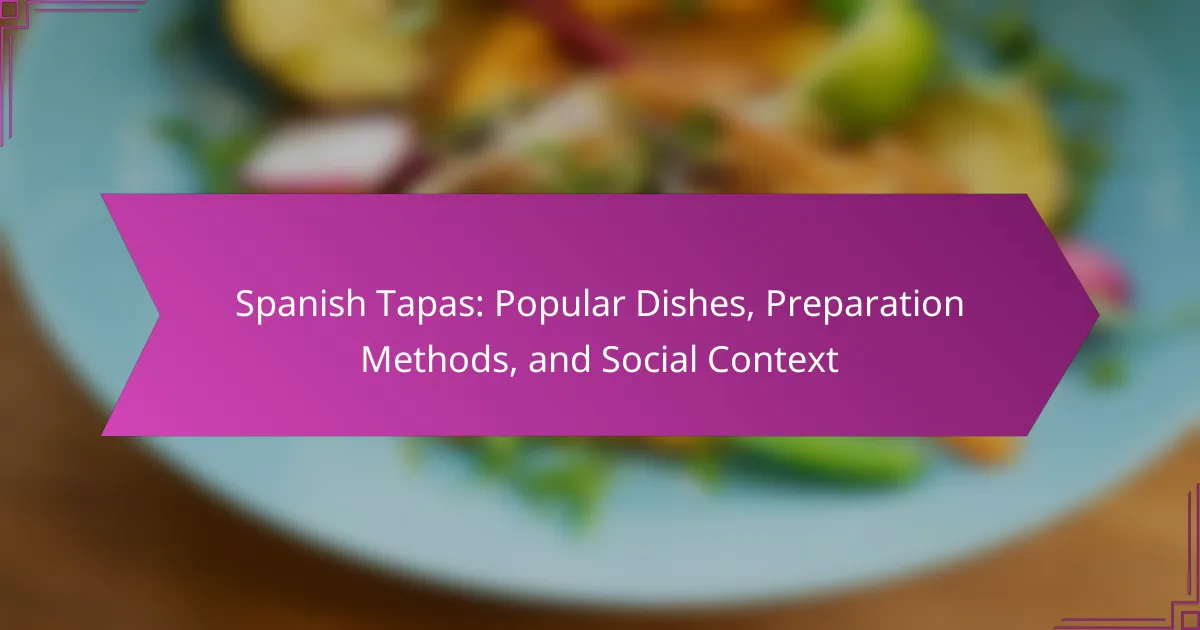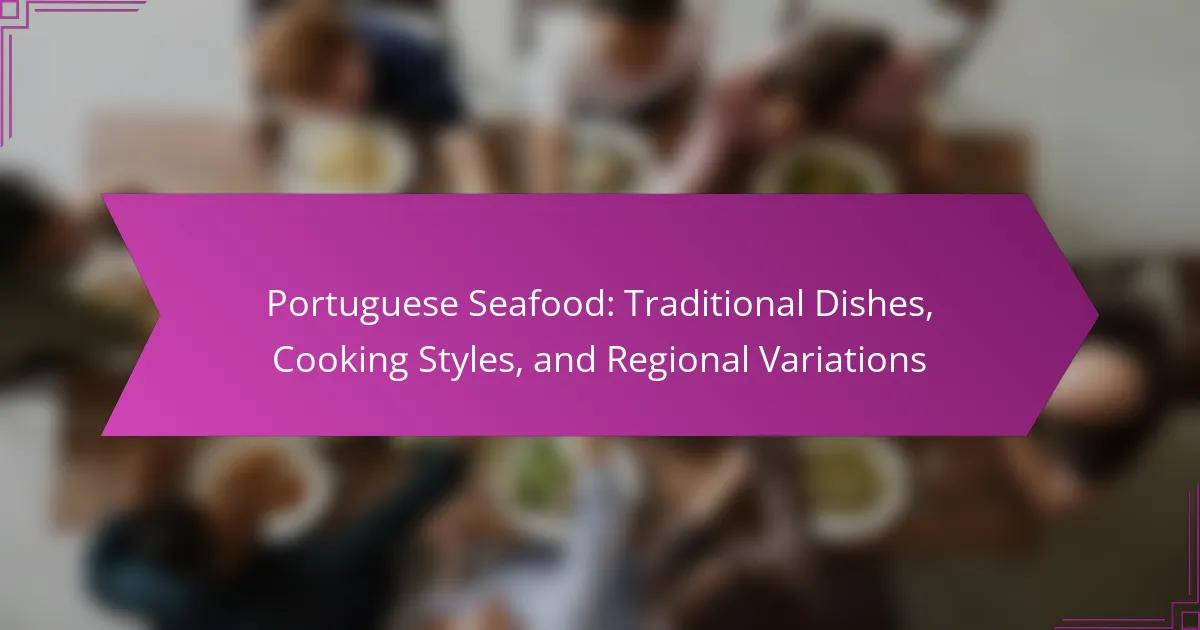Italian pasta offers a rich tapestry of regional varieties, each showcasing unique characteristics and local ingredients. Explore the diverse cooking techniques that enhance flavor and texture. Discover the cultural significance of pasta in Italian cuisine, symbolizing family and tradition. Uncover lesser-known dishes that highlight Italy’s gastronomic heritage.

What are the key regional varieties of Italian pasta?
Italian pasta features key regional varieties, each with unique characteristics. Notable types include:
1. **Pasta alla Norma** from Sicily: Made with eggplant, tomato, and ricotta salata.
2. **Orecchiette** from Puglia: Ear-shaped pasta, often served with broccoli rabe.
3. **Tortellini** from Emilia-Romagna: Stuffed pasta traditionally filled with meat or cheese.
4. **Bucatini** from Lazio: Thick spaghetti with a hole running through, commonly paired with amatriciana sauce.
5. **Pici** from Tuscany: Hand-rolled pasta resembling thick spaghetti, often served with simple sauces.
6. **Fusilli** from Campania: Spiral-shaped pasta, versatile for various dishes.
These varieties reflect local ingredients and culinary traditions, highlighting the cultural significance of Italian pasta.
How does pasta differ across Northern and Southern Italy?
Pasta differs significantly across Northern and Southern Italy, reflecting regional ingredients and traditions. Northern Italy features creamy sauces and fresh egg pasta, while Southern Italy emphasizes tomato-based sauces and durum wheat pasta.
In Northern Italy, dishes like tagliatelle and tortellini are common, often served with rich sauces like Alfredo or Bolognese. The use of butter and cream is prevalent, showcasing the colder climate’s influence on hearty meals.
Conversely, Southern Italy favors pasta like spaghetti and penne, typically paired with lighter, tomato-based sauces. Ingredients such as olive oil, garlic, and fresh vegetables are staples, highlighting the region’s agricultural bounty and warmer climate.
These regional differences in pasta types, cooking techniques, and accompanying ingredients illustrate the cultural significance of pasta in Italy, making it a reflection of local traditions and flavors.
Which regional pasta shapes are most popular?
The most popular regional pasta shapes in Italy include orecchiette from Puglia, trofie from Liguria, and pici from Tuscany. Each shape reflects local ingredients and culinary traditions. Orecchiette’s unique ear-like form holds sauces well, while trofie is perfect for pesto. Pici, a hand-rolled pasta, showcases the simplicity of Tuscan cuisine. Regional preferences contribute to Italy’s rich culinary diversity.
What ingredients define specific regional pasta dishes?
Italian pasta dishes are defined by regional ingredients that reflect local traditions and flavors. For example, Neapolitan pasta often features tomatoes, while pesto from Liguria includes basil and pine nuts. Each region’s unique climate and agricultural practices influence ingredient selection. In Emilia-Romagna, rich sauces with meat and cheese are common, showcasing the area’s culinary heritage. Regions like Sicily use seafood and capers, highlighting coastal influences. These ingredient choices not only enhance flavor but also signify cultural identity across Italy.

How do traditional cooking techniques influence pasta preparation?
Traditional cooking techniques significantly enhance pasta preparation by emphasizing regional flavors and textures. Techniques such as hand-rolling, drying, and using specific flours contribute to unique pasta varieties across Italy. For instance, the use of durum wheat flour in southern regions results in a firmer texture, while fresh egg pasta from the north offers a richer flavor. Additionally, methods like slow cooking sauces and incorporating local ingredients reflect cultural significance, creating a deeper connection to Italian heritage. These practices not only preserve culinary traditions but also influence the overall dining experience.
What are the methods for making fresh pasta at home?
To make fresh pasta at home, use one of these methods: mixing flour and eggs by hand, using a food processor, or employing a stand mixer. Each technique offers unique benefits for texture and ease.
1. Hand Mixing: Create a mound of flour, make a well, and add eggs. Gradually incorporate flour until a dough forms. Knead until smooth.
2. Food Processor: Combine flour and eggs in the processor. Pulse until the dough gathers. Knead briefly by hand for a smooth finish.
3. Stand Mixer: Use the dough hook to mix flour and eggs. Knead until elastic, ensuring a consistent texture.
Each method yields fresh pasta with distinct characteristics, ideal for various regional Italian dishes.
How do cooking times and techniques vary by pasta type?
Cooking times and techniques differ significantly by pasta type. For instance, fresh pasta requires less cooking time, usually around 2 to 4 minutes, while dried pasta takes longer, typically 8 to 12 minutes.
Different shapes and sizes also influence cooking methods. Thin pasta, like angel hair, cooks quickly, whereas thicker varieties, such as rigatoni, may need additional time. Techniques like boiling or sautéing can further affect the final texture and flavor.
Regional varieties of pasta, such as orecchiette from Puglia or pici from Tuscany, may also have unique cooking traditions that enhance their cultural significance. Each type of pasta reflects local ingredients and culinary practices, making the cooking process a vital aspect of Italian cuisine.
What role does sauce pairing play in cooking pasta?
Sauce pairing is crucial in cooking pasta as it enhances flavor and complements regional varieties. Different sauces bring out the unique characteristics of pasta shapes and ingredients. For instance, thicker sauces pair well with robust pasta like pappardelle, while lighter sauces suit delicate shapes such as angel hair. This relationship between sauce and pasta reflects Italy’s diverse culinary traditions and regional ingredients, offering a rich cultural experience. Proper pairing elevates the dish, showcasing the harmony of flavors and textures inherent in Italian cuisine.

Why is pasta significant in Italian culture and cuisine?
Pasta is significant in Italian culture and cuisine due to its rich history and regional diversity. Each region in Italy has unique pasta shapes and sauces, reflecting local ingredients and traditions. For example, Northern Italy favors creamy sauces, while Southern Italy often uses tomato-based sauces. Cooking techniques vary, with methods like al dente preparation highlighting the importance of texture. Additionally, pasta serves as a cultural symbol, representing family gatherings and celebrations. Its versatility allows it to adapt to various dishes, making it a staple in Italian households.
How does pasta feature in Italian celebrations and festivals?
Pasta plays a central role in Italian celebrations and festivals, symbolizing unity and tradition. Various regional pasta dishes are prepared for specific occasions, reflecting local customs and ingredients. For example, in Bologna, lasagna is a staple during family gatherings, while in Naples, spaghetti alle vongole is often served during religious festivals. Each dish not only highlights culinary diversity but also reinforces cultural identity. Celebrations often feature pasta as a centerpiece, fostering communal bonds and shared experiences among participants.
What are the nutritional aspects of traditional Italian pasta?
Traditional Italian pasta is rich in carbohydrates, providing energy, and contains essential nutrients like protein and dietary fiber. The nutritional profile varies by regional varieties, with some pasta made from whole grains offering higher fiber content. For example, pasta from durum wheat has a higher protein content compared to regular wheat pasta. Additionally, pasta serves as a versatile base for various sauces and ingredients, enhancing its nutritional value through added vegetables and proteins. The cultural significance of pasta in Italy also emphasizes its role in balanced meals, often accompanied by healthy ingredients.

Which unique pasta dishes are lesser-known but noteworthy?
Unique lesser-known pasta dishes include Busiate, a Sicilian specialty, and Pici, a Tuscan hand-rolled variety. Busiate features spiraled pasta often served with pesto. Pici is characterized by its thick, chewy texture, typically paired with simple sauces. Another noteworthy dish is Strascinati from Puglia, known for its unique shape and rustic preparation. Lastly, Maltagliati, meaning “badly cut,” highlights the creativity of using pasta scraps in flavorful dishes. Each of these pasta varieties reflects regional culinary traditions and ingredients, showcasing Italy’s diverse gastronomic heritage.
What are some rare pasta ingredients and their uses?
Rare pasta ingredients include squid ink, farro, and stinging nettles. Squid ink adds a unique briny flavor and dark color to pasta dishes. Farro, an ancient grain, offers a nutty taste and chewy texture, enhancing the nutritional profile of pasta. Stinging nettles provide a distinct earthy flavor and are rich in vitamins, making them a nutritious addition. These ingredients showcase regional diversity and elevate traditional Italian pasta recipes.
How do artisan pasta makers innovate traditional recipes?
Artisan pasta makers innovate traditional recipes by blending regional ingredients and modern techniques. They experiment with flavors, textures, and shapes, often incorporating local produce and unique spices. This creativity enhances the cultural significance of pasta, making it a dynamic culinary art. For example, some artisans use ancient grains, adding nutritional value and distinct taste. Others create visually striking pasta shapes that reflect contemporary aesthetics while honoring traditional methods. This innovation keeps the culinary heritage alive and relevant in today’s food landscape.

What are the best practices for cooking and serving pasta?
To cook and serve pasta effectively, follow these best practices. Use a large pot of salted water for boiling, ensuring the pasta has enough space to move freely. Cook until al dente, as this enhances texture and flavor. Drain without rinsing to retain starch, which helps sauces adhere. Serve immediately and pair with appropriate sauces based on regional traditions, such as marinara for Southern Italy or pesto for Liguria. Garnish with fresh herbs or cheese to elevate the dish.
What common mistakes should be avoided when cooking pasta?
To avoid common mistakes when cooking pasta, ensure proper water-to-pasta ratio, use ample salt, and avoid overcooking. Cooking pasta in a large pot with enough water prevents sticking and allows even cooking. Salting the water enhances flavor, while overcooking leads to a mushy texture. Additionally, refrain from rinsing pasta after draining, as it removes essential starch that helps sauce adhere.
How can one enhance the flavor and texture of pasta dishes?
To enhance the flavor and texture of pasta dishes, use quality ingredients and diverse cooking techniques. Incorporate fresh herbs, spices, and seasonal vegetables to elevate taste. Experiment with different pasta shapes to create varied textures that complement sauces. For example, pairing a rich sauce with a robust pasta shape enhances the overall dish. Cooking pasta al dente maintains firmness, providing a satisfying bite. Additionally, finishing pasta in the sauce allows flavors to meld, creating a harmonious dish.



